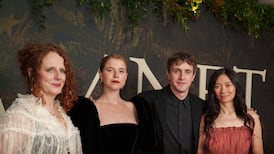DOON peninsula in south Mayo used to be a wilderness to be avoided. If a stray sheep or cow ventured into the jungle of ash, hazel and the odd oak embedded in a mass of briars, you could fall victim to faidhin mhairbh, a disorientation where you roam for hours and maybe end up where you started out.
Tom Quinn, whose family owned the land, remembers with fear such experiences from his youth. But that 26 acres was hiding a stunning story of archaeological history, revealed by a great aerial survey of Ireland.
Doon was cast in a new light. The peninsula was found to contain a Bronze Age (2000BC) site with up to 30 places of human habitation. What's more, photographs confirmed the existence of a large rampart at the narrowest access point to the peninsula, the largest of its type in the country.
With some trepidation, Tom and his wife, Dolores, wondered what they would do with such an important site. With the help of Father Frank Fahey of nearby Ballintubber Abbey, the archaeologist Michael Gibbons through the Office of Public Works - confirmed the existence of a lake promontory fort. Three years later they opened Doon Archaeological Nature Peninsula. It is at Burriscarra, not far from Carnacon village between Claremorris and Ballintubber.
An "odyssey through 9,000 years", compacted into an afternoon, leaves one with a sense of how landscape and the past can be interpreted without tarnishing precious terrain. Builders of interpretative centres should he subjected to a mandatory visit to Doon. It's an unobtrusive yet evocative interpretation of our past and nature, as acknowledged last year by An Taisce and in an Interpret Ireland Awards commendation.
It is epitomised in narrow stone paths, discreet wooden signs, wooden seats at good viewing points and a minimum of disruption to important archaeological sites.
Dolores or her guide helps to highlight intriguing and sometimes not so obvious features on the landscape, and they do it with humour and quirky comparisons with modern times.
There are hut sites, an animal enclosure and a canoe dock from the Bronze and Iron Ages, an Ice Age cave and much from more recent times.
Castlecarra is an important 13th century Norman castle nearby in the countryside where the feuding O'Murrays, O'Gormallys and O'Tierneys lived. Adam de Staundun built it and did not escape the skirmishes. His family later took on the Irish name, MacEvilly, which was attributed to a falling out among De Burgo clans.
That row was compounded by slow communications, which resulted in the unnecessary drowning of a son of the Earl of Ulster. This was "not in the age of mobile phones," Dolores explains.
Everywhere you turn there are wonderful views of Lough Carra. The marl at its bottom suggests somewhere in the tropics and not the west of Ireland. The distinctive chalk base, officially described as pellucid green, mixes with sand which is most unusual. Druids considered this phenomenon to be sacred, hence its original name, Fionlach Ceara, drifting snow.
The archaeological trail is not for toddlers, though it intrigues five and six year olds with a fascination for warriors, noted locally a few centuries back for their wild roars and faces painted with lime from the lake bottom. A recently added nature trail, however, has provided an attraction for the very young.
The Quinns realise that as it's off the beaten track, it will take time to become the successful tourism product it deserves to be. "We knew Doon was a valuable asset even if we never made a penny out of it," Tom explains. "When I go back there and walk it myself, it's heaven."
The Interpret Ireland Awards citation talks of looking out and seeing still water and reeds and nothing at all present to remind you that this is 1995 and not 695". The trail shows evidence of life from those earlier times. Long may people think they are in a time warp.









